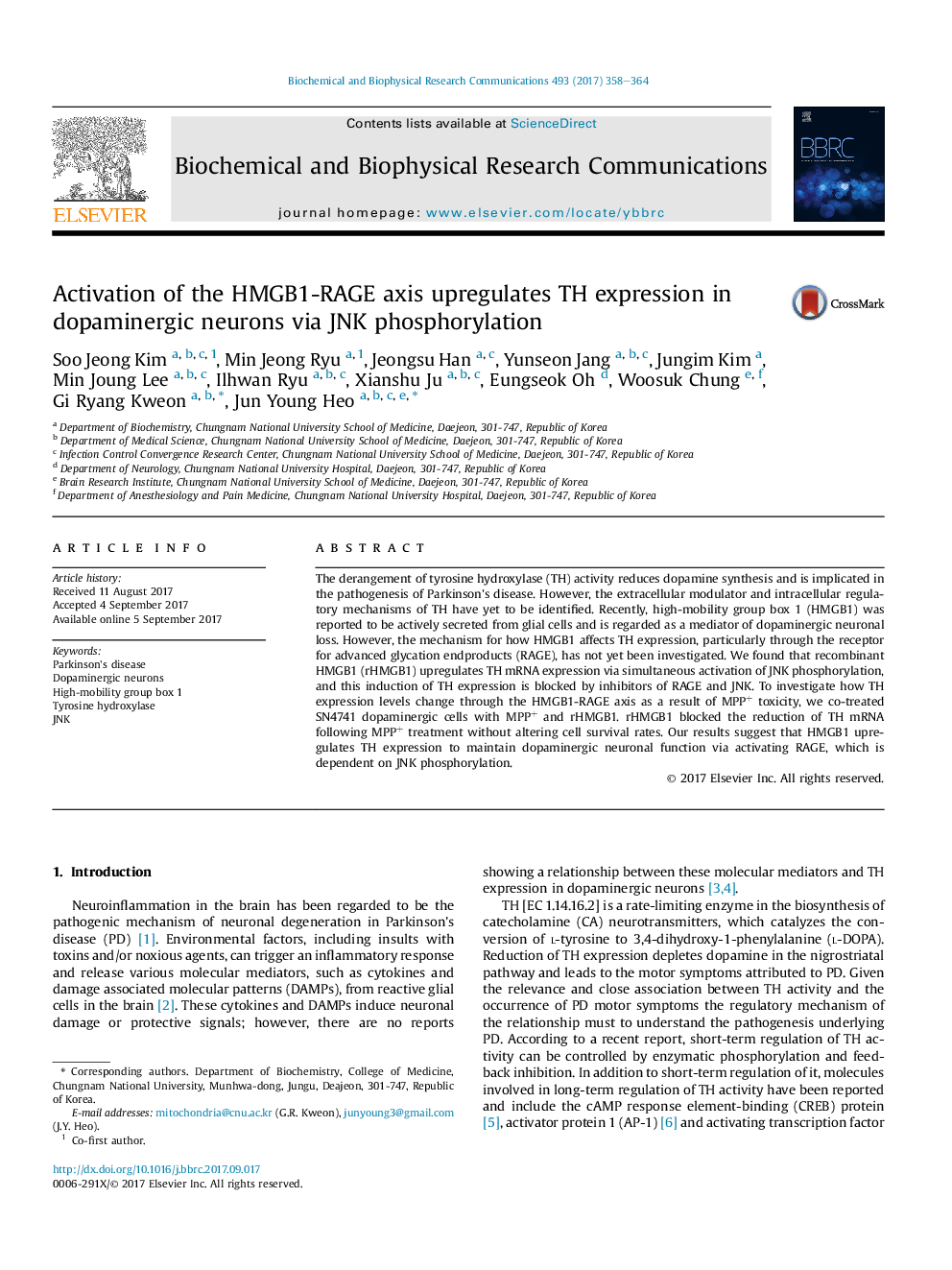| Article ID | Journal | Published Year | Pages | File Type |
|---|---|---|---|---|
| 5504650 | Biochemical and Biophysical Research Communications | 2017 | 7 Pages |
Abstract
The derangement of tyrosine hydroxylase (TH) activity reduces dopamine synthesis and is implicated in the pathogenesis of Parkinson's disease. However, the extracellular modulator and intracellular regulatory mechanisms of TH have yet to be identified. Recently, high-mobility group box 1 (HMGB1) was reported to be actively secreted from glial cells and is regarded as a mediator of dopaminergic neuronal loss. However, the mechanism for how HMGB1 affects TH expression, particularly through the receptor for advanced glycation endproducts (RAGE), has not yet been investigated. We found that recombinant HMGB1 (rHMGB1) upregulates TH mRNA expression via simultaneous activation of JNK phosphorylation, and this induction of TH expression is blocked by inhibitors of RAGE and JNK. To investigate how TH expression levels change through the HMGB1-RAGE axis as a result of MPP+ toxicity, we co-treated SN4741 dopaminergic cells with MPP+ and rHMGB1. rHMGB1 blocked the reduction of TH mRNA following MPP+ treatment without altering cell survival rates. Our results suggest that HMGB1 upregulates TH expression to maintain dopaminergic neuronal function via activating RAGE, which is dependent on JNK phosphorylation.
Related Topics
Life Sciences
Biochemistry, Genetics and Molecular Biology
Biochemistry
Authors
Soo Jeong Kim, Min Jeong Ryu, Jeongsu Han, Yunseon Jang, Jungim Kim, Min Joung Lee, Ilhwan Ryu, Xianshu Ju, Eungseok Oh, Woosuk Chung, Gi Ryang Kweon, Jun Young Heo,
